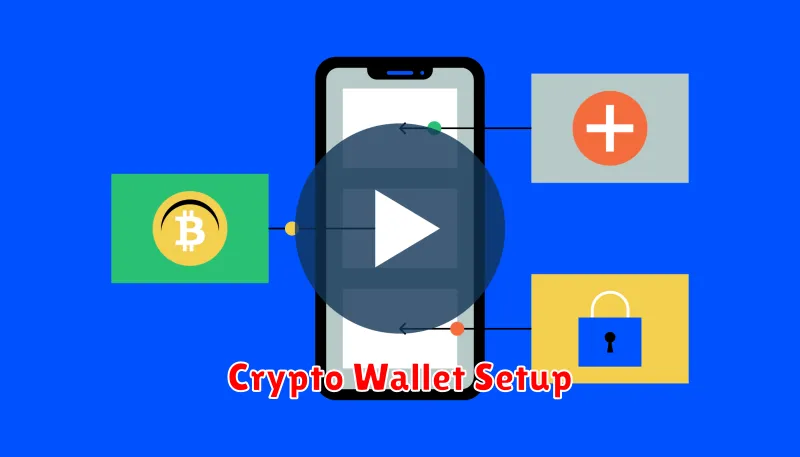Securing your cryptocurrency investments is paramount, and understanding how to set up a secure crypto wallet is the first crucial step. This comprehensive guide will walk you through the process of establishing a robust and secure digital wallet, covering essential aspects like choosing the right type of wallet (hardware wallet, software wallet, or paper wallet), implementing strong password security practices, and understanding the various security risks involved. Learn how to protect your Bitcoin, Ethereum, and other crypto assets from theft and loss by mastering best practices for cryptocurrency wallet security. We’ll equip you with the knowledge to confidently manage your digital assets and navigate the world of cryptocurrency storage with confidence.
Choosing the Right Crypto Wallet
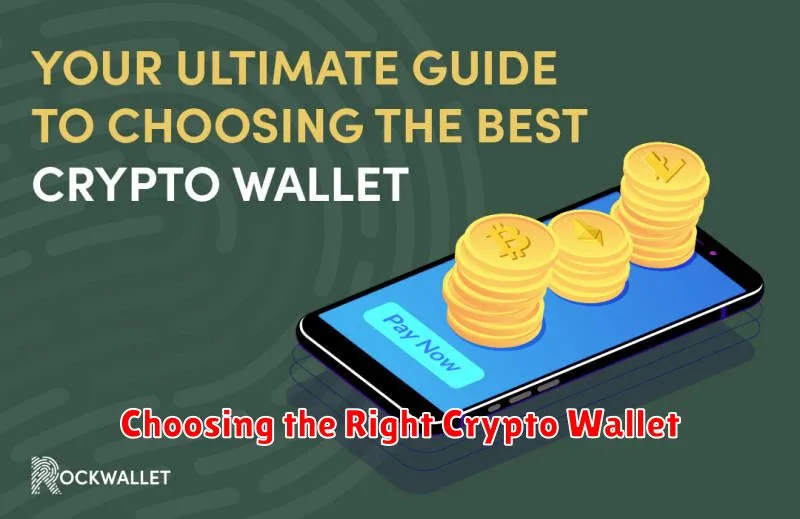
Selecting the appropriate crypto wallet is crucial for security and convenience. The best choice depends on your specific needs and technical expertise.
Hardware wallets offer the highest level of security, storing your private keys offline, making them resistant to hacking. However, they require a physical device and can be more expensive.
Software wallets, including desktop and mobile applications, provide more accessibility but require greater caution to ensure security. Choose reputable providers with strong security features and regularly update your software.
Web wallets, accessed through a browser, offer ease of use but present higher security risks due to their online nature. Only use trusted platforms with robust security measures and be aware of phishing scams.
Paper wallets, printed private keys, offer offline security but are vulnerable to physical damage or loss. They are best suited for long-term storage of small amounts of cryptocurrency.
Consider factors like the types of cryptocurrencies you plan to hold, the level of security you require, and your comfort level with technology when making your decision. Research thoroughly before choosing a wallet.
Hot vs Cold Wallets: Which One is Better?
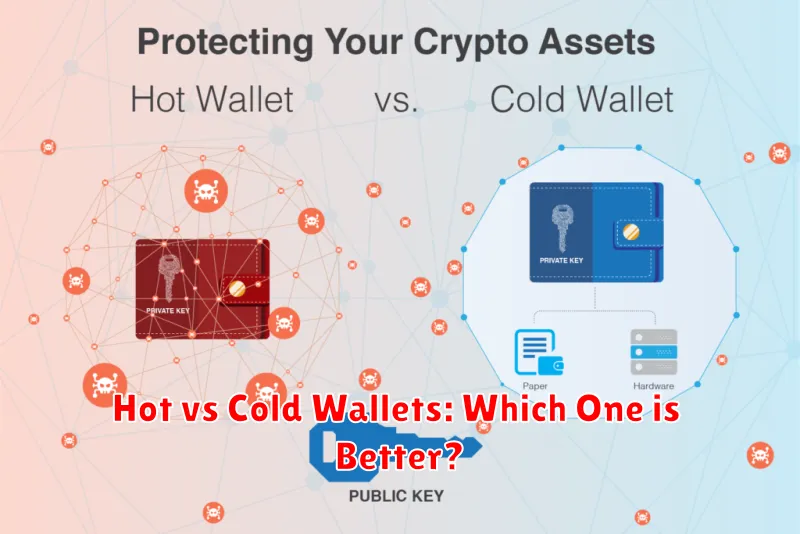
The choice between a hot wallet and a cold wallet depends primarily on your priorities: security versus convenience. Hot wallets, like mobile apps or web-based wallets, offer easy access to your cryptocurrencies for quick transactions. However, their constant internet connection makes them more vulnerable to hacking and malware.
Cold wallets, such as hardware wallets or paper wallets, prioritize security by storing your private keys offline. This significantly reduces the risk of theft, but it comes at the cost of convenience; accessing your funds requires more steps and is generally slower.
For users who frequently buy, sell, or trade cryptocurrencies, a hot wallet might be suitable, provided they are aware of the security risks and implement robust security practices. For users prioritizing long-term storage and security of significant cryptocurrency holdings, a cold wallet is generally recommended. Consider your own risk tolerance and usage patterns when making your decision.
Creating a Wallet Step-by-Step
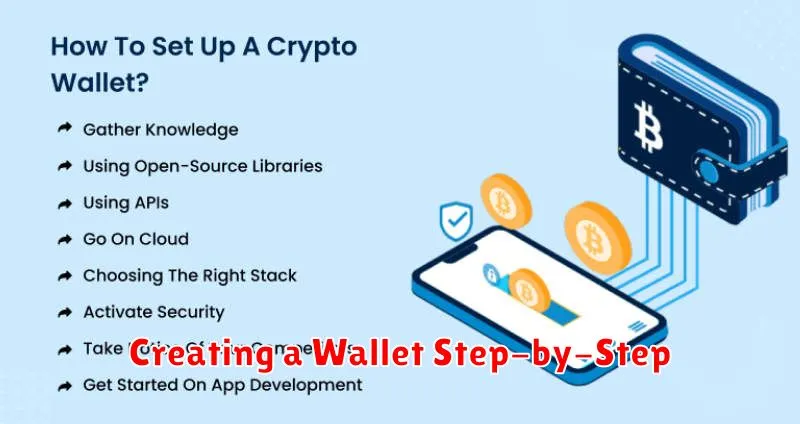
Choosing the right crypto wallet is crucial. Consider your needs – hardware, software, or web-based – before proceeding. Each type offers varying levels of security and user experience.
Download and Install: Once you’ve selected a reputable wallet provider, download the application or access the web platform. Follow the installation instructions carefully.
Create a Strong Password: This is paramount. Use a complex password, including uppercase and lowercase letters, numbers, and symbols. Avoid easily guessable information.
Secure Your Seed Phrase: The seed phrase (recovery phrase) is extremely important. This is a list of words that allows you to restore your wallet if you lose access. Write it down on paper, store it securely offline, and never share it with anyone.
Verify Your Wallet Address: Before receiving or sending any cryptocurrency, double-check your wallet address. A simple typo can lead to irreversible loss of funds.
Regularly Update Your Wallet: Software updates often include crucial security patches. Keep your wallet software updated to minimize vulnerabilities.
Setting Up Two-Factor Authentication (2FA)
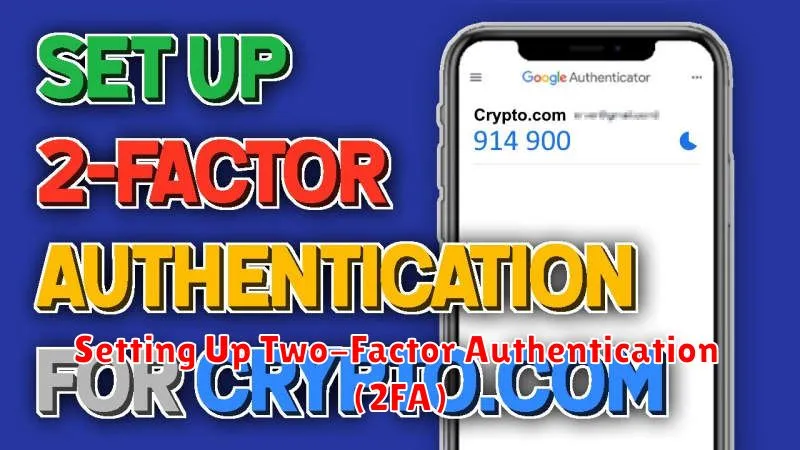
Two-Factor Authentication (2FA) adds an extra layer of security to your crypto wallet, significantly reducing the risk of unauthorized access. It requires two forms of verification to log in: something you know (like your password) and something you have (like a code from your phone).
To set up 2FA, navigate to your wallet’s security settings. Look for the 2FA or multi-factor authentication option. You’ll typically be prompted to choose an authentication method, such as an authenticator app (like Google Authenticator or Authy) or SMS verification.
If using an authenticator app, scan the QR code displayed by your wallet using the app. This will add your wallet to the app. You’ll then need to enter the time-sensitive code generated by the app when logging in. For SMS verification, provide your phone number and confirm via a code sent to your device. Always backup your recovery codes provided during 2FA setup. These are essential if you lose access to your authentication method. Remember to keep your recovery codes safe and secure, as they can be used to regain access to your wallet.
Enabling 2FA is crucial for protecting your cryptocurrency investments. It’s a simple step that significantly enhances the security of your wallet, making it much harder for malicious actors to gain access to your funds.
How to Backup Your Wallet Properly
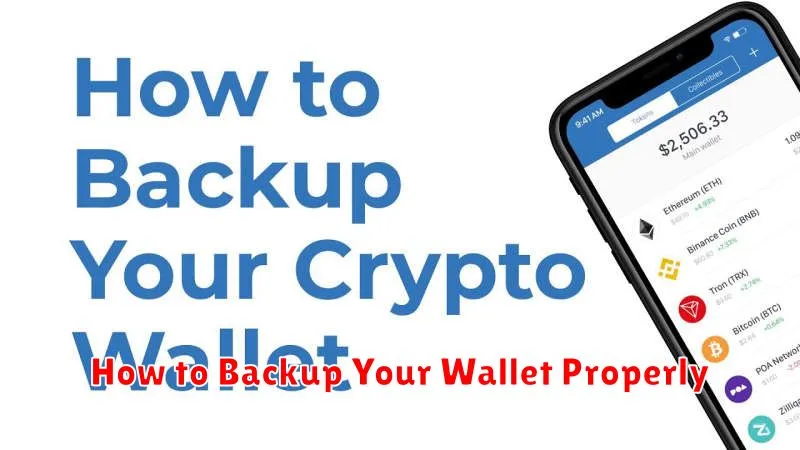
Properly backing up your crypto wallet is crucial for protecting your assets. A compromised wallet can lead to irreversible loss of funds. Therefore, understanding and implementing a robust backup strategy is paramount.
The most secure method is to write down your seed phrase (also known as a recovery phrase or mnemonic phrase) on paper. This is a list of 12-24 random words that acts as a master key to your wallet. Never store it digitally; digital backups are vulnerable to hacking and malware.
Store your written seed phrase in a safe, secure, and inaccessible location. Consider using a fireproof and waterproof safe or splitting the phrase across multiple secure locations. Memorizing your seed phrase is also an option, but be absolutely certain you can recall it accurately.
Beyond your seed phrase, consider creating additional backups. These are not as secure as your seed phrase but provide redundancy. You might choose to take a screenshot of your private keys (never use a digital device to permanently store it). However, remember that your seed phrase takes precedence. If you lose access to your wallet, your seed phrase is the only way to recover it.
Regularly verify your backups are intact and accessible. Treat your seed phrase with the utmost care; its loss could result in the permanent loss of your cryptocurrency.
Avoiding Common Wallet Security Mistakes

Protecting your cryptocurrency requires vigilance against common security pitfalls. One major mistake is using weak or easily guessable passwords. Employ strong, unique passwords for each wallet, ideally using a password manager.
Never reuse passwords across different platforms, including your email and social media accounts. A breach in one area could compromise your entire crypto portfolio.
Avoid storing your seed phrase digitally. Write it down on paper and keep it in a secure, offline location. Losing or having your seed phrase compromised grants immediate access to your funds.
Be wary of phishing scams. Legitimate exchanges and services will never ask for your seed phrase or private keys. Verify the authenticity of any communication before providing sensitive information.
Update your wallet software regularly. Updates often include crucial security patches that protect against newly discovered vulnerabilities.
Use a reputable wallet provider. Research thoroughly and select a wallet with a strong security track record and positive user reviews. Avoid using unknown or poorly-reviewed wallets.
Enable two-factor authentication (2FA) whenever possible. This adds an extra layer of security, making it significantly harder for unauthorized individuals to access your account.
Be cautious about public Wi-Fi. Avoid accessing your wallet on unsecured networks, as your data could be intercepted.
Regularly review your wallet’s transaction history for any suspicious activity. Immediate detection of unauthorized access is crucial for mitigating potential losses.

